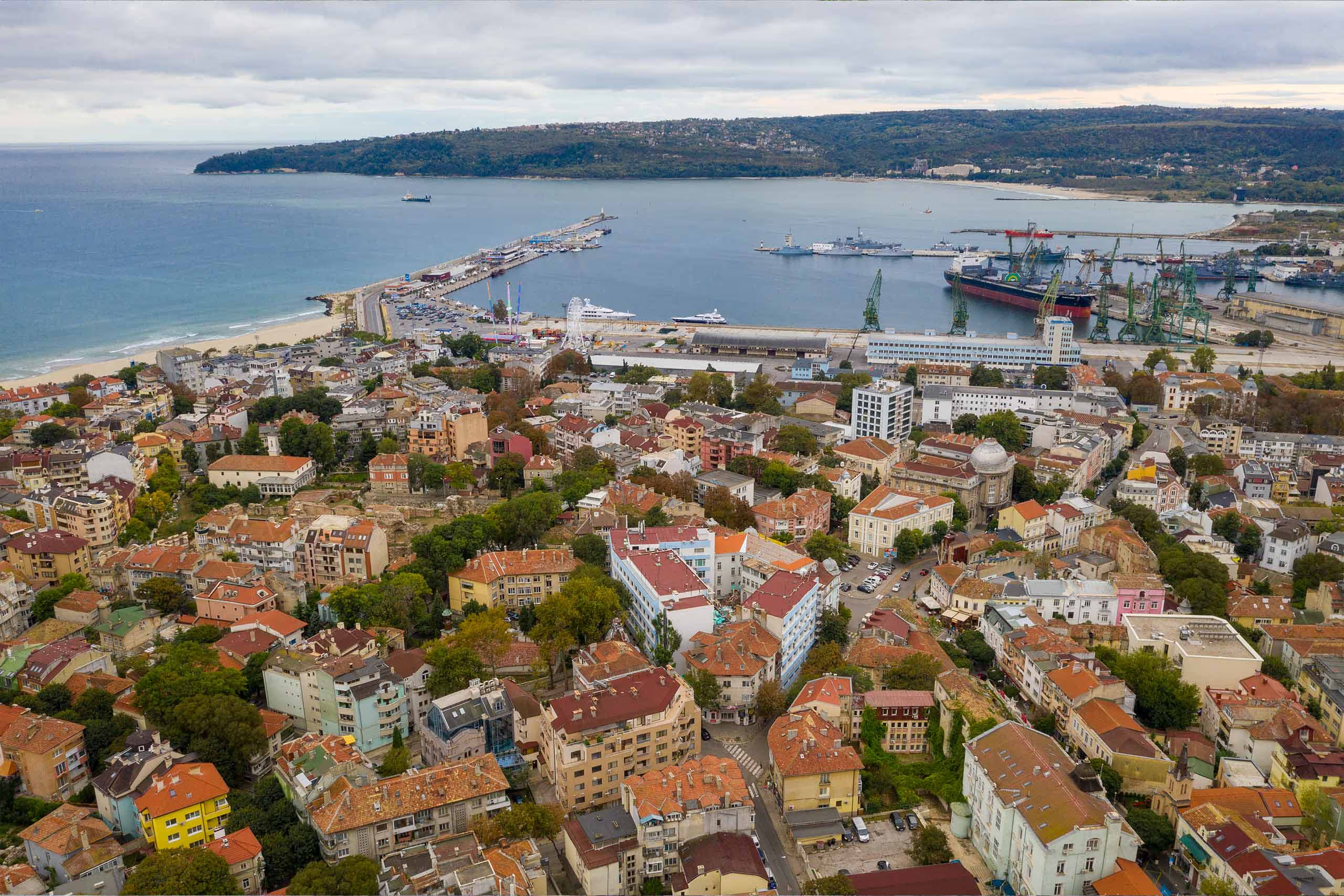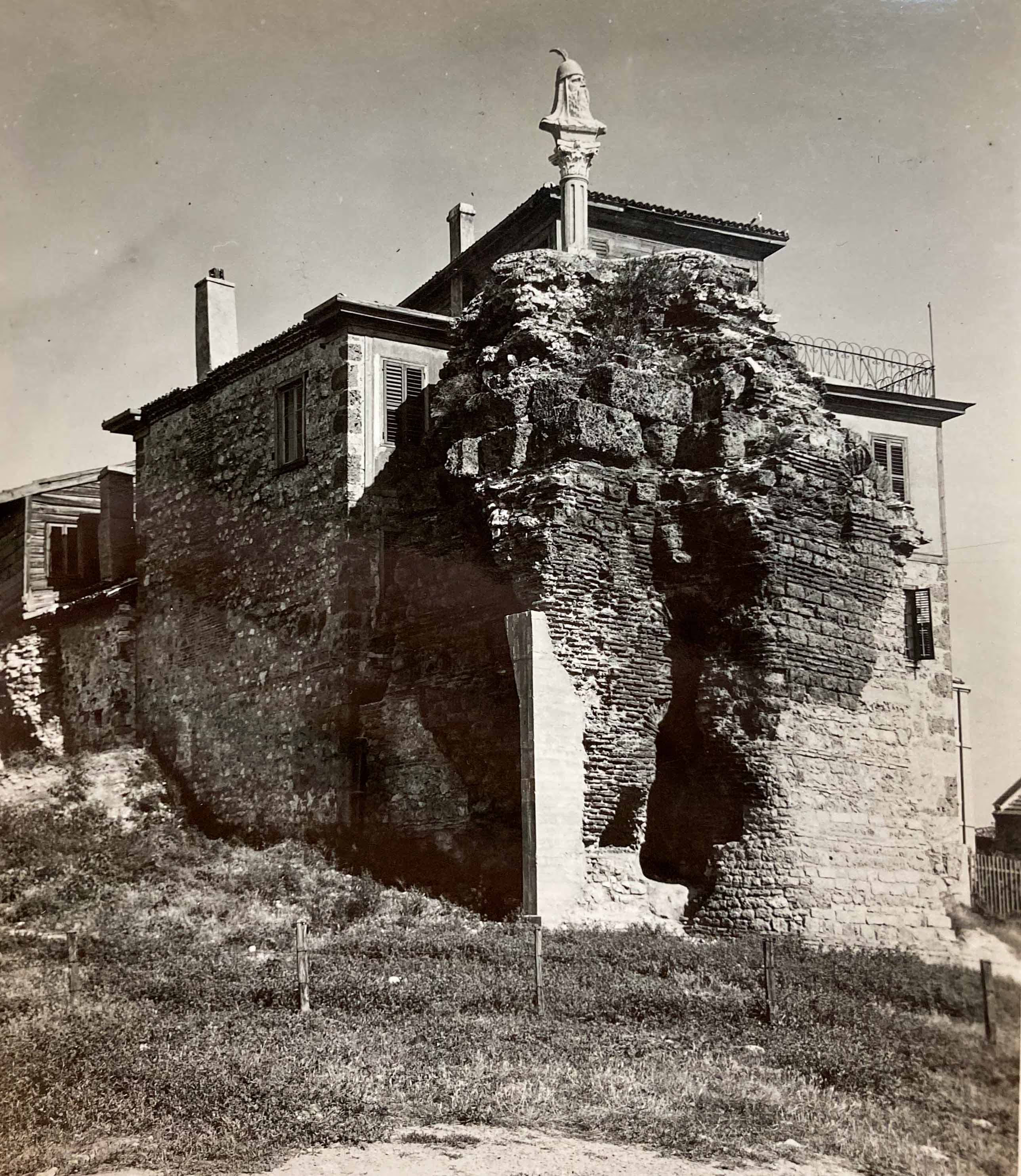
Датировка
The Creation of Ancient Odessos: 6th century BC to 19th century.
Кратка информация
Archaeological Reserve "Odessos" was declared by Order of the Council of Ministers No. 76 of April 27, 1974. The following year, Instructions were promulgated /S.G. 83/28.11.1975/ for the protection of the Architectural and Archaeological Reserve occupying the territory of the ancient city of Odessos - Varna.
The boundaries of the reserve cover a vast area in the central part of the city, where many archaeological sites have been discovered over time. Some of them have received status and are exhibited, but quite a large part have remained buried under the existing building fund or have been destroyed under various circumstances (most often construction activities). For the most part, the discovered sites in the reserve area were photographed by architects or surveyors, but the archival fund on a physical medium is kept in RIM-Varna and there is still no digital archaeological cadaster.
The area is characterized by extremely rich stratigraphy and cultural diversity. The archaeological sites on the territory of the reserve have different dates, and in many places the cultural layers (between 4 and 8 m.) are on top of each other, clearly showing the connections and differences between them. The earliest sites belong to the Hellenistic era and are associated with the settlement of the sea coasts by emigrant movements from Aegean Greece. It is clear that the Ancient City-Colony was founded by Asia Minor emigrants from the Ionian city-state of Miletus.
The discovered objects are of different dates and are of several types:
• Fortification facilities:
Several fortress walls from different periods have been found within the boundaries of the reserve. The earliest dated /IV century BC/ is the Hellenistic fortress wall, discovered in 1987. by M. Lazarov during rescue excavations in the square Mujdu Blvd. "Knyaz Boris" and the streets "Archimanrdit Filaret", "Kn. Al. Battenberg", and "Voden". The dry square building (opus quadratum) typical of the Hellenistic era is clearly visible. For the moment, this is the only place with the oldest fortress wall identified.
About 40m north of the oldest Hellenistic wall, a Roman fortress wall was discovered, dated to the second quarter of the IV century - the time of the reign of Emperor Tiberius. The construction technique of the monumental structure is typical of the fortifications of the Roman period. The construction of the external and internal facade masonry is filled with large squares, some of which have rusticated faces and others - smooth. A wall with the same date was discovered on Tsaribrod Street in the 1980s, and in 2019 along its route, a structure was discovered, which is believed to be the southern gate of the fortress. The two construction periods discovered, of which the lower layer is dated to the 4th century BC. - 2nd - 3rd century., the upper - 5th - 6th century. Excavations are still in progress and the circumstances and history of the structure in question are yet to be clarified. A part of a late antique fortress wall was uncovered and exposed on "Yoan Exrkh" Square (Shishkova garden) during the improvement of the area in 2019.
The next fortress wall, from late antiquity (Early Byzantine period - 5th - 6th century) was detected in several places in the city - on "Knyaz Boris" Blvd., next to "St. Nicholas" Church (signed in the pavement); on "Shipka" street north of "Knyaz Boris" blvd., as well as during the construction of several residential buildings in the vicinity; part of the wall and a tower were uncovered during rescue excavations during the construction of the Valentina Department Store (scarce data); the tower preserved in the basement of a residential block at the corner of Primorski Blvd and M Street belongs to the same dating. Columns”.
The next chronologically is the Turkish fortress wall, which encloses a significantly smaller area than the city structure.
There are different hypotheses of archaeologists and researchers about the different dates and routes of the different fortress walls. The hypothesis of reuse of the structures in subsequent periods was put forward for many of the sites, and the Shkorpil brothers put forward the thesis of the use of the Roman fortress wall of Odessos throughout the Middle Ages, right up to the 15th - 16th centuries as early as 1909. Each new discovery provides scientists with new data that contribute to clarifying the functions and history of the fortifications and the extent of the city in different eras.
• Public buildings:
The most significant public buildings - archaeological sites discovered in Varna are the Roman Baths. Two such facilities were found in the reserve - they are conventionally designated as northern and southern, or as they are known among Varna residents - "large" and "small" thermal baths.
The Northern Roman Baths represent the largest public ancient building discovered so far in Bulgaria. In its modern limits, the excavations occupy an area of nearly 7,000 square meters. The dating of the site refers to the end of 2nd - beginning of and the 3rd century AD. The object had an extremely important function in the society of that time with serious social significance, which is also the reason for its high urban planning value in the urban structure.
The southern thermae have a later date. According to the archaeological materials of Goranka Toncheva from 1961. the original building was built towards the end of the 2nd century and lasted until the 5th century. Probably in the 5th - 6th century. was rebuilt and extended to the north. During the excavations, many valuable movable cultural assets were also found, which testify to the culture of ancient Odessos - jewelry, clay lamps, amphorae, over 450 bronze coins, etc.
In 2018 during rescue archaeological excavations at 11 Sofroniy Vrachanski Street, remains of a large architectural complex of late antique water facilities were discovered. According to the research archaeologists from RIM - Varna: Valeri Yotov and Alexander Minchev, this complex water complex represented a nymphaeum (city fountain) that functioned in the 5th - 6th centuries. Cult buildings:
There are several early Christian churches on the border of the reserve, the earliest and most significant in terms of its cultural value being the Episcopal Basilica on Khan Krum Street. According to research, it functioned as an episcopal temple in early Christian Odessos.
Three construction periods have been established: it was built at the end of the 4th - beginning of the 5th century and represented a single-apsed basilica with greatly reduced proportions, with a richly decorated interior and exterior. After a short existence (several decades) it was destroyed, most likely by an earthquake. In its place, in the 5th century, a significantly larger three-nave balisika with two narthexes was built, which lasted nearly 60 years, from where the mosaics exhibited in ROME-Varna, restored in 2002, came from. When they were removed, in the central nave - near the altar, a brick two-chamber crypt was discovered, and in it a reliquary with the relics of an unknown saint. During the third construction period, a new temple was again erected on the ruins of the old one, but with a marble floor. It was probably destroyed during the capture of the city by the Slavs in 614.
In 1973. during rescue excavations, a basilica was also discovered at the corner of Tsar Simeon Street and Kozloduy Street, but due to intensive construction in the 19th and 20th centuries, it was heavily destroyed.
The basilica at the corner of "Tsar Kaloyan" and "Knyaz Dondukov" streets was located northeast of the Roman baths, where rescue excavations revealed massive walls of an ancient building and a marble column with a relief cross. The site has not been fully explored.
Several other basilicas have been discovered on the territory of the reserve: Basilica under the building on "St. Clement' No. 18 (studied in 1963); Basilica on "Tsaribrod" Street and "Tsar Simeon" Street; Basilica on "San Stefano" and "Chernorizets Hrabar" streets.
• Residential buildings:
Residential buildings are found in many places in the city. In almost every plot where the implementation of a certain investment initiative begins, parts of buildings are detected, which in some places have a serious stratigraphic depth. Parts from all historical periods can be found, as somewhere the old ones have been upgraded, and somewhere they have been built according to a new town planning scheme. Coins, dishes and household items, such as ceramics and various tools, are found in most of the sites, which testify to the way of life of the community at that time.
• Communication structures and facilities of the technical infrastructure (streets, canals):
At the corner of "Knyaz Boris I" Blvd. and "Dragoman" St., the ancient street running northwest-southeast was discovered. It is paved with large stone blocks, and a circular opening has been preserved in one of them. Along its perimeter there is a mounting rebate for a cover, which is common to the Roman street system. The opening has a revision function and allows access to the city sewer.
Another section of an ancient street was revealed during rescue excavations in 2003-2005 at 10 and 12 Tsar Kaloyan Street. The construction site is located immediately north of the Roman Baths of Odessos. During the excavations, it was found that, as a result of numerous interventions over the centuries, the cultural layers were greatly disturbed. During the survey, a part of the route of the Decumanus with a slight deviation from the directions of the world (northeast-southwest) was revealed.
At present, the general technical condition of the material substance of the group immovable cultural property can be said to be satisfactory, tending to poor. Some of the objects are socialized and annual conservation-restoration activities take place on them, for example, large and small Roman baths. However, some of the sites, despite their uniqueness and high degree of cultural value, are sinking into oblivion due to lack of resources and are threatened with destruction - for example, the late antique family tomb next to the Regional State Archives-Varna. There is a tendency to increase public interest in cultural heritage in recent years, as well as an increasingly adequate and appropriate attitude towards the discovered antiquities on the territory of Varna. This is expressed in the significantly more responsible attitude of the institutions regarding the control over the objects of our archaeological heritage and of the investors when implementing various initiatives.
Местоположение
Historical core of the city /Greek neighborhood/, Odessos, Varna
Културна пренадлежност
Ancient (Hellenistic) culture; Roman culture; Ottoman culture; Bulgarian culture
Проучване
Shkorpil Brothers and Varna Archaeological Society; Teams of the Regional Historical Museum - Varna;
Техническо състояние
Задоволително техническо състояние
Статут /описан в АКБ/
Национално значение- резерват /S.G. 83/28.11.1975г./
Режим на опазване /съгласно чл.35 от НАРЕДБА №7/
G
Подобни обекти

Knyaz Boris Blvd., Nezavisimost Square, Odessos Archaeological Reserve, Varna

"Knyaz Boris I" Blvd., Archaeological Reserve "Odessos", Varna

Akchelar locality, Primorski district; Janavar tepe area /Ilan tepe/, Asparuhovo district; Gundyuza area, Galata district;

"Knyaz Boris I" Blvd., Archaeological Reserve "Odessos", Varna

19 Primorski Blvd., Archaeological Reserve "Odessos", Varna

"Khan Krum" St., on the corner with "Kn. Al. Battenberg" St., Archaeological Reserve "Odessos", Varna


















